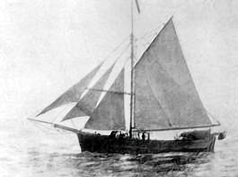|
Vol. 231 No. 5 |

|
|
PRAMOD KULKARNI, EDITOR
|
Norway’s Gjøa Field getting ready for production
Norway’s largest offshore development since Snøhvit and Ormen Lange is scheduled to produce its first oil and gas in September. It is Gjøa Field, located in Blocks 35/9 and 36/7, about 60 km west of the coastal town of Florø and 70 km north of Troll Field. Gjøa’s reserves are estimated to be 83 million bbl of oil and condensate and 1.4 Tcf of gas. The field was discovered in 1989 and is being developed at a cost of approximately $5.3 billion. Field partners are GDF Suez (30%), Petoro (30%), Statoil (20%), Shell (12%) and RWE Dea (8%). The field has Statoil as the development operator. In September, GDF Suez will take over as the production operator.
Gjøa Field will be produced from a semisubmersible production platform and five subsea templates. Additionally, a flowline will carry gas and condensate into processing facilities on the Gjøa production platform from the adjacent Vega South, Central and North Fields. The Vega Fields are expected to hold 640 Bcf of gas and 26 million bbl of condensate. After onboard processing, the gas will be transferred through the Flags pipeline to St. Fergus in Scotland while the oil will be piped via a tie-in to Statoil’s refinery at Mongstad, near Bergen. If the crude oil is not refined at Mongstad, it can be delivered to a crude oil terminal that serves as an intermediate storage facility for exports to customers in North America, Europe and Asia.
 |
Gjøa Field will be produced from a semisubmersible production platform with five subsea templates. Courtesy of Statoil.
|
|
Gjøa semisubmersible production platform. Aker Solutions served as Statoil’s service provider for the front end engineering design and detail design of the topside and hull, procurement, construction and hookup of the topside, and mating of the topside and hull. The hull was built in South Korea and mated with the deck in December 2009 during a complex operation in the Stord Island fjord. Aker was also responsible for the mooring system, transportation and installation of the platform.
New operator in Norway. Paris-based GDF Suez is one of the world’s leading energy companies. The multinational corporation is the result of a 2008 merger of equals between water, gas and electricity providers Gaz de France and Suez SA. The latter company was responsible for building the Suez Canal. GDF Suez arrived in Norway in 2001 as part of the Norwegian campaign to increase competition and attract newcomers. The company has several E&P licenses in the North Sea, Norwegian Sea and Barents Sea. Gjøa Field will be its first Norwegian project in the role of a production operator.
Electric power from shore. In addition to its oil and gas riches, Norway generates 98% of its electric power from hydroelectric plants. To take advantage of this easily available power and to minimize carbon emissions from produced natural gas, the Gjøa production platform will be the third offshore facility in Norway—after Troll and Kollsnes—to be energized by an electric power transmission line from the shore. This mode of operation is expected to reduce carbon emissions by 210,000 to 250,000 tonnes per year.
 |
Gjøa Field is named after the 70-ft sloop in which Roald Amundsen discovered the Northwest Passage.
|
|
Gjøa in history. Gjøa Field has a historical antecedent in the vessel that Roald Amundsen used to discover the Northwest Passage. Kurt Johannesson Skaale built the 70-ft sloop in 1872 and named it after his wife. The Gjøa left Oslofjord in June 1903 with Amundsen and a crew of six and reached Nome, Alaska, in August 1906 after navigating through the Northwest Passage. The vessel was iced in for the first time at King William Island in the Arctic Archipelago and again at Herschel Island in the Yukon.
After the completion of its monumental journey, the Gjøa was on display at San Francisco’s Golden Gate Park until 1972, when it was returned to Norway’s National Maritime Museum in Oslo. 
|





